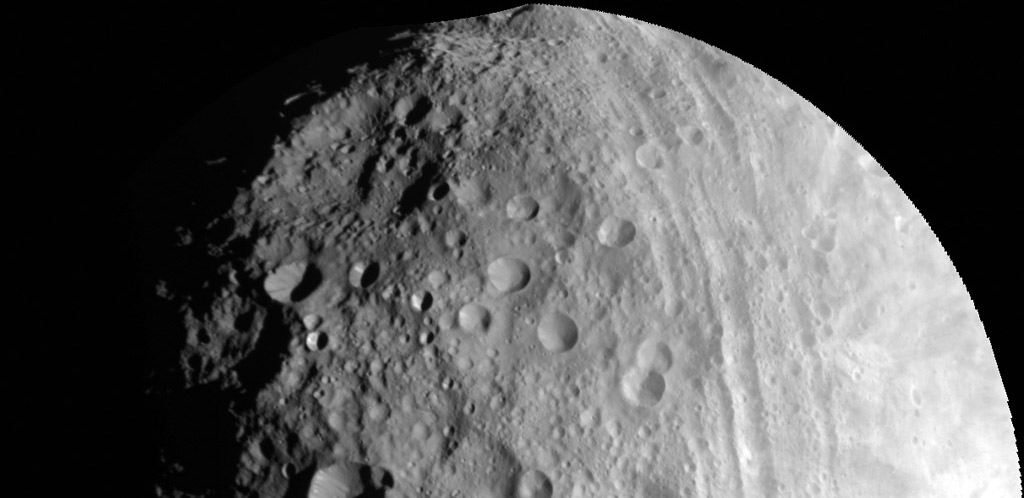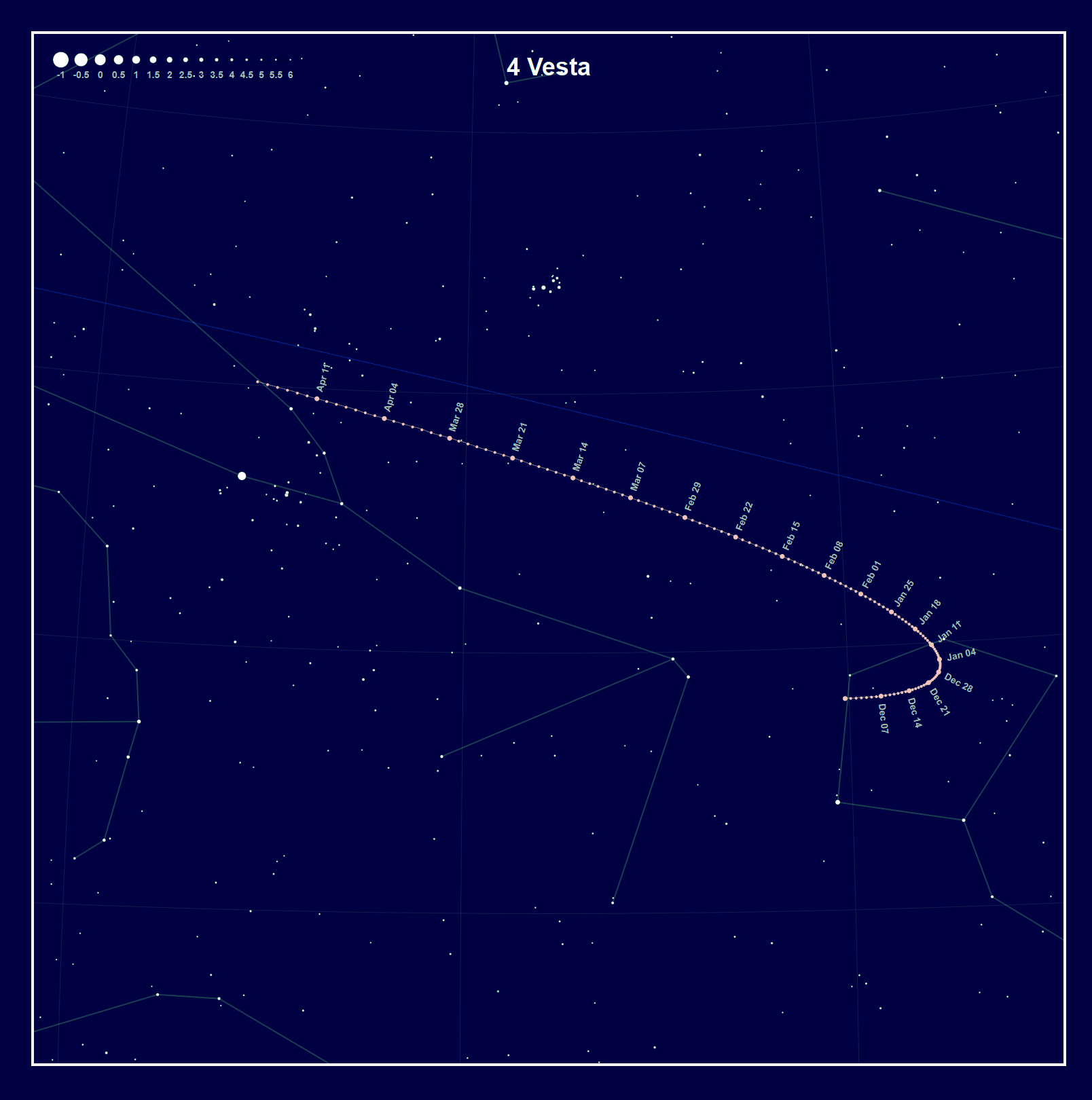
Vesta: The Brightest Asteroid
December 2019 :
Note: This article may contain outdated information
This article was published in the December 2019 issue of The Skyscraper and likely contains some information that was pertinent only for that month. It is being provided here for historical reference only.
We’re often asked by visitors at observatory open nights which planets are visible in the evening sky. Mars rises rather early in the morning sky, and just after sundown, Venus shines brilliantly as our Evening Star, but still sets rather early. Jupiter, Saturn and Mercury spend December beyond the Sun, mostly hidden from our view, leaving our prime observing hours devoid of naked-eye planets.
But wait, there’s more! Our solar system has more to offer than just its eight planets. There are a myriad of other, smaller bodies circling the Sun--dwarf planets, asteroids, and comets. And some of these “smaller” bodies aren’t so small, and are fairly easy to see. While our skies haven’t been graced by a bright comet in some time, there are always a dozen or so of the larger asteroids within easy reach of small telescopes or even binoculars. While they generally will not be naked-eye visible, some of them often appear brighter than Neptune’s magnitude 8..
This month we’ll take a look at the second-largest of the main-belt asteroids: 4 Vesta. While Vesta is somewhat smaller than the largest of the asteroids, 1 Ceres (which is now classified as a dwarf planet), its surface reflectivity, known as albedo, is significantly higher, and it orbits a bit closer to the Sun than Ceres does, making it the brightest of the main-belt asteroids when it is near opposition, which it reached this year on November 12.

Vesta will be visible high in the sky for the next several months as it completes its retrograde loop through the tail of Cetus before traveling eastward back through Taurus in early 2020.
Because it is a relatively small object (compared to the planets) and we’re now moving away from it, it dims significantly over time, so your best opportunity to observe it with binoculars is during the next few weeks. At the beginning of December, it will be a magnitude 6.7 point of light, and by the end of the year it fades to magnitude 7.4, after which your best time to view it will be nights when there is no moonlight to interfere. But, speaking of the Moon, you can watch a waxing crescent Moon pass within 2° below Vesta (mag 8.2) on leap day evening, February 29.
Further into the new year, in early April, Vesta joins the Hyades cluster in Taurus as it sinks toward the western horizon. Though it will be fairly dim by this time (around magnitude 8.5), it will make for a stunning photographic opportunity, especially with brilliant Venus within the Pleiades cluster nearby.
This full view of the giant asteroid Vesta was taken by NASA's Dawn spacecraft, as part of a rotation characterization sequence on July 24, 2011, at a distance of 3,200 miles and shows impact craters of various sizes and grooves parallel to the equator. NASA/JPL-Caltech/UCLA/MPS/DLR/IDA



